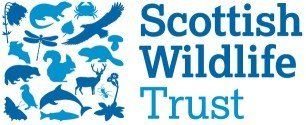Balgavies Loch


near Forfar, NO527509 O.S. Sheet 54
Overview
The 53Ha reserve contains diverse wildlife habitats: open water, wetland, woodland and meadows. Designated part of the Lunan Valley SSSI for its diverse plant assemblage, the bird and invertebrate populations are notable too. Resident birds include re-introduced greylag geese, tufted duck and great-spotted woodpecker.
In Summer over 50 bird species breed in the reserve. In late March chiffchaffs and ospreys arrive, followed by 5 more warbler species. Later, mallard and tufted duck can be seen marshalling their sometimes quite large families. Moorhens ‘lily-trot’ when yellow water lilies cover the western shallows. Buzzards frequently mew overhead. Swallows, house martins and swifts make a marvellous sight as they hawk for insects over the loch in the evening.
Winter migrant birds include pink-footed geese and goldeneye. Northern thrushes, redwing and fieldfare, feast on the abundant hawthorn berries. Large groups of goosander can occur. Water rail are more easily seen from the hide in winter.
One of a series of wetlands in the Upper Lunan Valley, Balgavies Loch is surrounded by intensively farmed agricultural land. On its southern side it is bounded by an "esker", a sinuous ridge of sand and gravel deposited by meltwater flowing beneath the narrow river glacier which carved out the valley, and on the north by the track of the former Forfar-Arbroath railway line. Reedbeds fringe the loch; to the west there is extensive fen and, on the higher ground, one of the few remaining oakwoods in Angus.
Wildlife
The waters of the loch once supported an eel fishery, with the traps located at the outflow of the Lunan Burn from Balgavies Loch and at the outflow of the neighbouring Rescobie Loch. The loch also contains perch, pike and trout which keep the cormorants, grey herons and otters of the area well-fed.
At the water's edge, plants such as water-lily, yellow iris and bogbean grow alongside cowbane, which is at its northern limit here. The marsh and fen areas are covered largely with willow carr and bog myrtle, interspersed with tall plants such as meadowsweet. These, in turn, overshadow the tiny greenish- yellow spikes of the coralroot orchid and the yellow flowers of the rare tufted loosestrife.
Unfortunately, the water which drains from the agricultural land into the loch carries with it large amounts of dissolved nitrates and phosphates. As a result the aquatic life which once was very varied is becoming less so, because some species cannot survive when the water is enriched in this way. At the moment there is little that can be done about this widespread problem, but the reserve has become an important research site for studying the effects of changing water conditions.
Conservation
Active conservation measures include improving the woodland by planting a mixture of native trees, and removing invasive plants which threaten the existence of more fragile species along the railway line.
Access to the Reserve
Balgavies Loch lies off the A932, 4 miles east of Forfar. The Viewpoint has parking for 5 cars and offers views of the east end of the loch. The hide and its car park is at the west end of the loch.
There is open access to the circular path (with gates) and the hide is open to the public. See Bing Maps
here for the access track and paths.
There is a leaflet explaining the wildlife to be seen while walking round the reserve.
Download .


